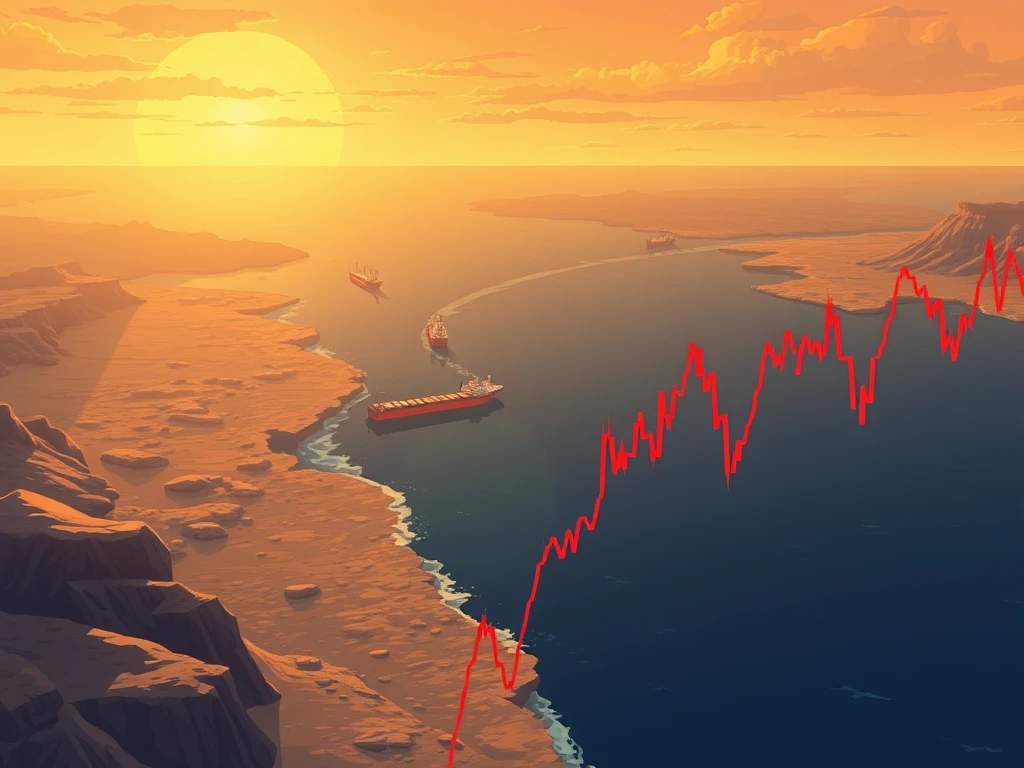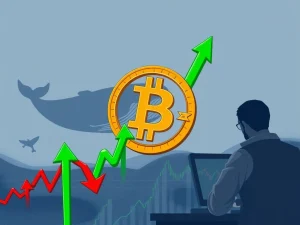Urgent Bitcoin Price Warning: Strait of Hormuz Closure Threatens Markets

The Bitcoin price has shown resilience recently, even amidst rising tensions in the Middle East. However, a significant short-term threat looms, according to market analysts. The potential closure of the Strait of Hormuz could trigger a sharp market reaction, particularly impacting assets sensitive to global events.
Why the Strait of Hormuz Matters for Bitcoin Price
The Strait of Hormuz is a vital shipping lane, critical for global energy markets. Analyst Nic Puckrin from Coin Bureau highlights this waterway as the biggest risk this weekend for financial markets, including crypto. The Strait facilitates roughly 20% of the world’s oil supply. Any disruption here has immediate and dramatic effects on the oil price.
Key points regarding the Strait of Hormuz risk:
- It’s a narrow passage for a large portion of global oil trade.
- Closure would cause a massive spike in oil price.
- This oil shock typically causes a sharp decline in risk assets globally.
- Crypto, trading 24/7, is vulnerable to absorbing this shock over a weekend.
Geopolitical Risk and Risk Assets
The current conflict between Israel and Iran introduces significant geopolitical risk into the market. While Bitcoin has matured as an asset class, its classification remains debated – is it a safe-haven or a risk-on asset? In scenarios involving major global shocks like an oil crisis, Bitcoin often behaves like other risk assets, experiencing sell-offs as investors seek safety.
Puckrin notes that the short-term direction of the Bitcoin price hinges on how the conflict evolves, specifically referencing the potential Strait of Hormuz closure as the key trigger for a market downturn affecting risk assets.
Long-Term Bitcoin Outlook vs. Geopolitical Risk
Despite the immediate concerns posed by geopolitical risk, the long-term outlook for Bitcoin price may be less affected by these events. Analysts like Nic Puckrin suggest that Bitcoin’s fundamental long-term drivers are more tied to macroeconomic factors, such as the declining value of the US dollar. The dollar recently reached a three-year low against some measures, a trend that could support the supply-capped nature of Bitcoin over time.
Bitcoin Accumulation Continues Despite Uncertainty
Adding another layer to the analysis, data indicates that long-term Bitcoin holders are not deterred by current macro or geopolitical risk. CryptoQuant analyst Burak Kesmeci points to continued accumulation by wallets defined as ‘long-term accumulation addresses’ (wallets active for years that haven’t sold).
Recent data highlights:
- Accumulation addresses saw a significant inflow of over 30,000 BTC on June 11th.
- This was the highest daily inflow recorded for 2025 by this metric.
- Total BTC held by these addresses now exceeds 2.9 million BTC.
- The average entry price for these holders sits around $64,000.
This persistent accumulation suggests that experienced investors view short-term volatility driven by events like potential Strait of Hormuz issues as temporary dips in a longer-term uptrend for Bitcoin price.
Summary: Navigating Short-Term Threats and Long-Term Trends
The Bitcoin price faces an immediate and significant risk from potential escalation in the Middle East, specifically concerning the Strait of Hormuz. A closure would dramatically impact the oil price, leading to a likely sell-off in risk assets, including Bitcoin in the short term. However, this near-term vulnerability exists alongside a longer-term narrative supported by macroeconomic trends like dollar depreciation and continued accumulation by long-term holders. Investors are monitoring these intersecting factors to understand the future path of the Bitcoin price.
Disclaimer: This article provides information and is not investment advice. Market decisions involve risk; conduct your own research.










